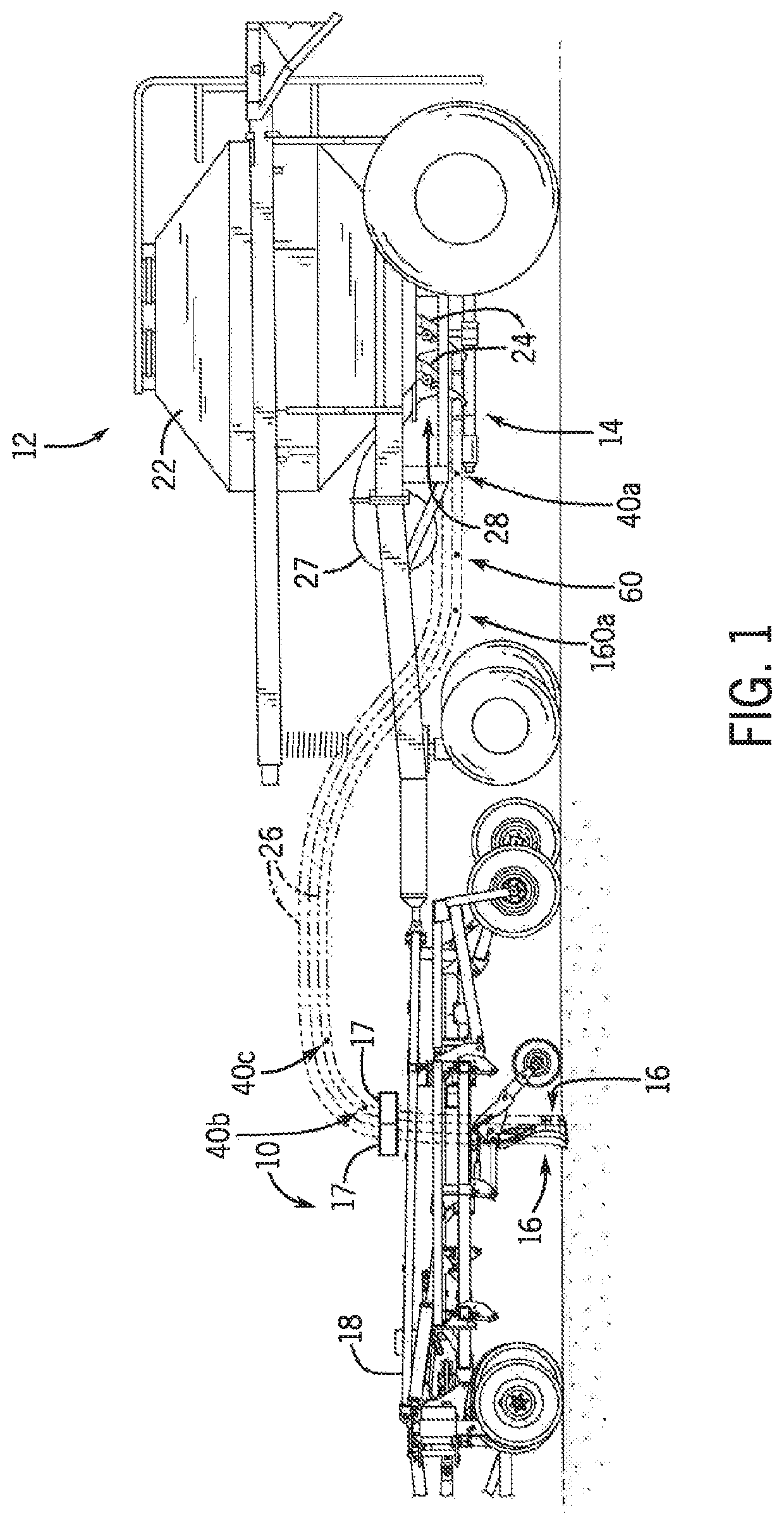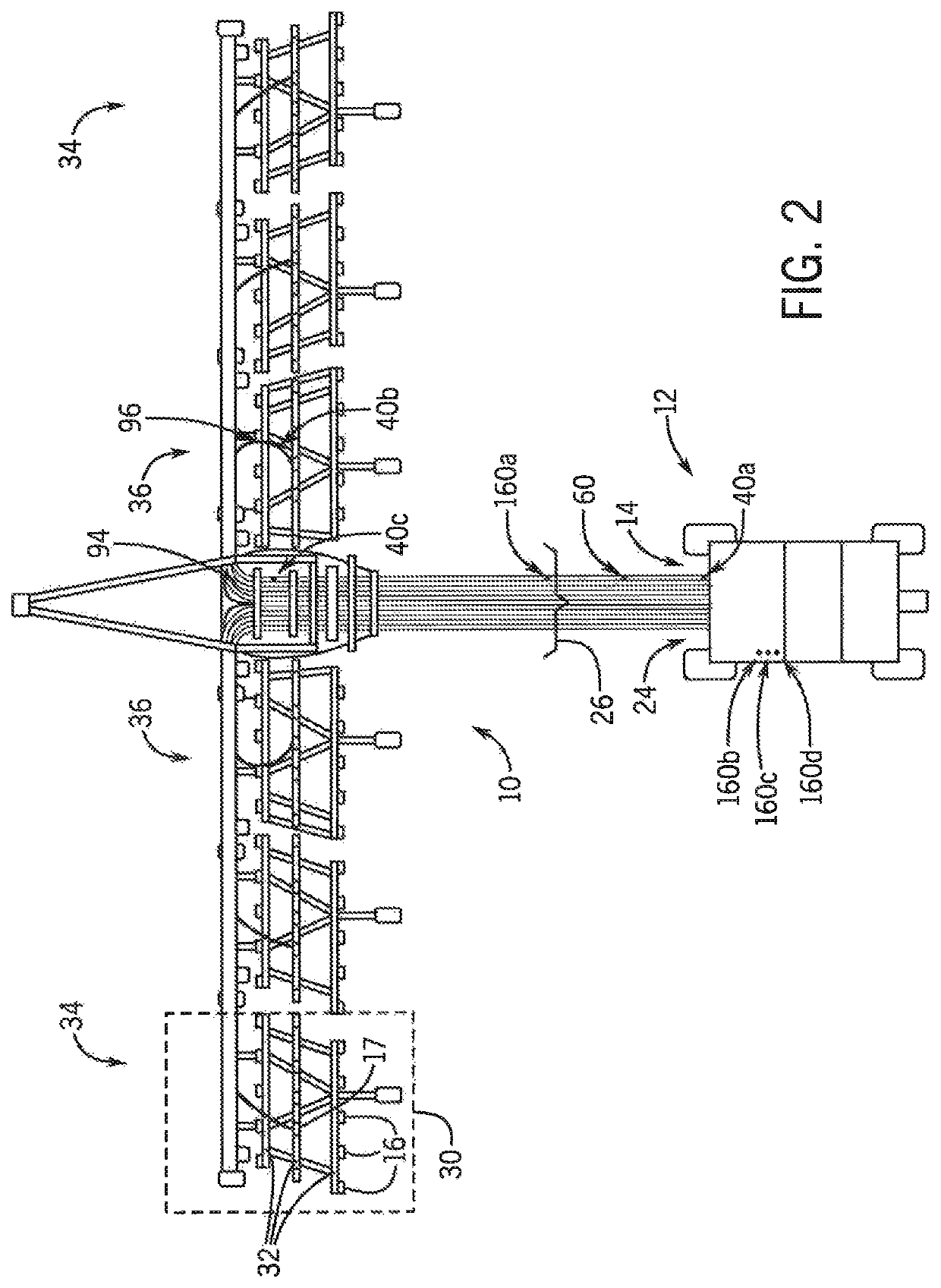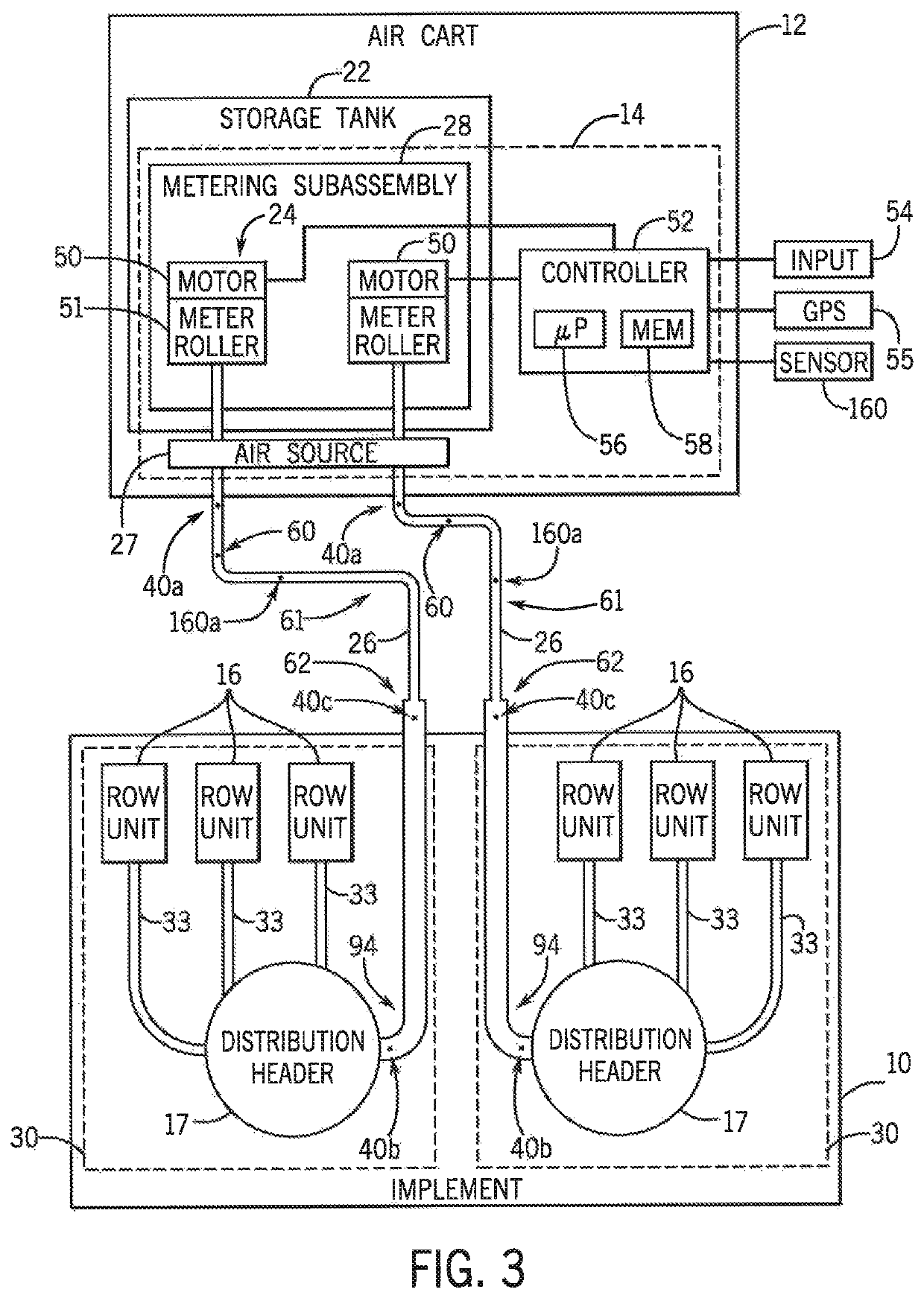Air cart product flow condition monitoring
a technology of product flow and air cart, which is applied in the direction of agriculture gas emission reduction, fertilising methods, agriculture, etc., can solve the problems of user air waste and system blockage, and achieve the effect of effective control of air sources, greater sensitivity, and diameter of product distribution lines
- Summary
- Abstract
- Description
- Claims
- Application Information
AI Technical Summary
Benefits of technology
Problems solved by technology
Method used
Image
Examples
Embodiment Construction
[0024]Referring now to the drawings and specifically to FIG. 1, a side view of an exemplar agricultural implement 10, which may be a seeding implement or tool, coupled to an air cart 12 having a control system 14 is provided in accordance with an aspect of the invention. The implement 10 includes multiple row units 16 and multiple distribution headers 17 supported by a frame 18. Each distribution header 17 is configured to receive agricultural particulate material, such as seed or fertilizer, from the air cart 12, and to route the product to each row unit 16. The row units 16, in turn, may be configured to deposit the agricultural product onto the soil as the implement 10 travels across an agricultural field. As shown, the air cart 12 can be coupled to the implement 10 via the frame 18. The air cart 12 may include one or more product storage tanks 22 configured to store one or more agricultural products (particulate material). Each product storage tank 22 is coupled to a correspondi...
PUM
 Login to View More
Login to View More Abstract
Description
Claims
Application Information
 Login to View More
Login to View More - R&D
- Intellectual Property
- Life Sciences
- Materials
- Tech Scout
- Unparalleled Data Quality
- Higher Quality Content
- 60% Fewer Hallucinations
Browse by: Latest US Patents, China's latest patents, Technical Efficacy Thesaurus, Application Domain, Technology Topic, Popular Technical Reports.
© 2025 PatSnap. All rights reserved.Legal|Privacy policy|Modern Slavery Act Transparency Statement|Sitemap|About US| Contact US: help@patsnap.com



